
The practitioners of all that Karl Marx had professed were vouching for the principles of Adam Smith by beating up farmers to forcibly acquire land for industrialists.
"I may be late but I am the latest," goes a classic Rajinikanth dialogue. Nowhere does this line hold truer now than in West Bengal.
Mamata Banerjee, the quintessential rabble-rouser, may have been late in defeating the Left parties which ruled West Bengal for 34-odd years, but she has given them a thorough thrashing nonetheless.
The 'Berlin Wall in India' has been brought down nearly 22 years after the original Berlin War was brought down and that led to the demise of what the world used to call communism.
. . .
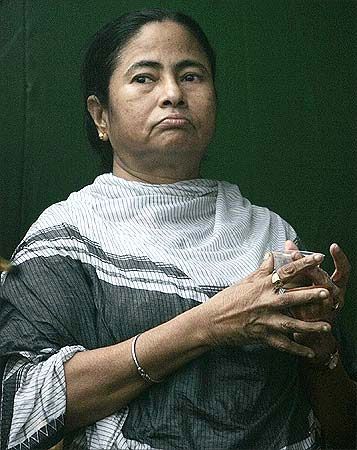
Communism is dead! Long live communism.
But this rhetoric notwithstanding, the bigger question is why did the Left lose West Bengal after ruling it for 34 years?
During that time it had ensured that the there was very little difference between the 'government' and the 'party'. This was an arrangement which ensured that it was very difficult for the people to go against the Left, even if they wanted to, especially in the rural and the semi-urban areas.
Did this arrangement break down? Not really.
The bigger disaster for the Left was the breakdown of what the 'Left' brand stood for and that was the final nail in the coffin.
. . .
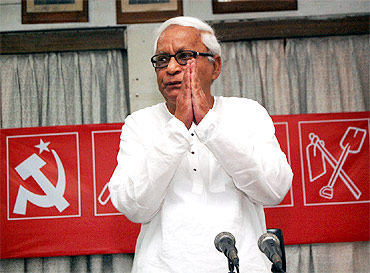
The Left brand
So what did the Left brand of politics stand for? To start with when the Left Front first came to power the Left brand stood for 'land reforms' where share croppers where handed over land after taking it over from wealthy landlords.
That one move ensured that an entire generation of Bengalis voted for the Left Front.
The Left Front also stood for the teak tree that card carrying members of the party planted in front of a house where a girl child was born. So that when the girl was old enough to be married, the teak tree could be cut and sold and the wedding expenses could be met from the money that was raised.
In the early eighties the Left brand also stood for 'trade unions' which bargained hard in the interest of the workers.
This, over the years, ensured that most industrialists shut shop and left for other parts of the country.
. . .
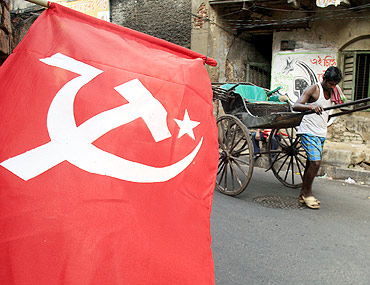
The Left brand stood for 24-hour bandhs against price rise, against communalism (read 'BJP') and so on.
The Left brand stood for everything that the common man in West Bengal could relate to.
And then things changed . . .
Buddhadeb Bhattacharjee took over as the Chief Minister of West Bengal in 2000 from Jyoti Basu. Bhattacharjee realised that the anti-industry plank of the Left was no longer relevant and Bengal needed industries that could create jobs.
Then, in right earnest, Bhattacharjee began to invite industrialists to set shop in West Bengal.
Among the first wave of businesses IT and BPO companies started coming to West Bengal. Land and labour were both cheap. IT companies were given some land outside Kolkata and they started to operate. So far so good.
. . .
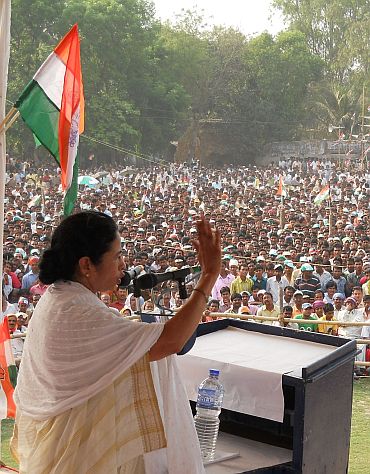
The trouble was too many bandhs that West Bengal had, especially for BPOs, who had to keep servicing their foreign clients all the time.
Buddha babu asked his party cadre not to disturb BPO employees on their way to work on bandh days. This was where the first dent into the Left brand was made.
Then the heavy industry companies wanted to set shop, given the sops on offer. This was where all the trouble started.
Almost all land in Bengal is agriculture land. And every time an industrialist wants to set shop it leads to some farmers being put out of job.
Things escalated when the party cadre in Nandigram resorted to violence against farmers who were protesting. The same was the case at Singur, where the Tata Nano plant was supposed to come up.
. . .
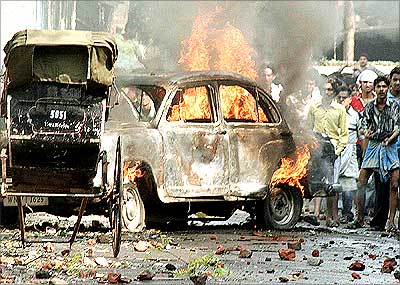
Well, when a hitherto pro-poor communist party starts beating up farmers, it need not be said that it does not do any good to the identity and brand it has cultivated carefully over the years.
The crackdown against protesting farmers, who were essentially protesting against their agricultural land being handed out to industrialists, was not acceptable.
This went totally against the anti-industry image that the people carried about the Left Front.
The same Left Front whose trade unions went cholbe na, cholbe na against industries and industrialists was now catering to the latter's demands, felt people of the state.
Communists had become capitalists. The practitioners of all that Karl Marx had espoused were now vouching for the principles of Adam Smith.
There clearly was a branding problem.
. . .
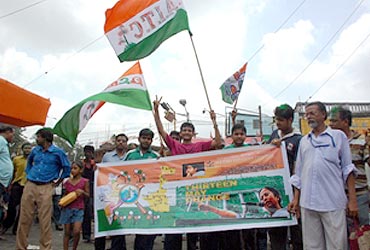
The vacant space
Of course, after this happened there was a vacancy in minds of people for the brand identity that Left had stood for. And this is where Mamata Banerjee fit in beautifully. Mamata joined the protestors at Singur.
All that the Left Front had formerly stood for, now Mamata stands for. Mamata became the new Left.
And that was the real poriborton (change).
As branding and marketing expert Al Ries puts it: "Focus is the essence of marketing and branding". The Left brand has lost focus.
Where do we go from here?
It will now be interesting to see how Mamata Banerjee takes to administration. Her brand has until now stood for a rabble-rouser who could take on the Left. And now she has stormed to power on the back of everything that the Left used to stand for.
Given this, it would be very difficult for her to make moves to get more industry into the state. Interesting times lie ahead for West Bengal.
The author can be reached at shonalee.biswas@gmail.com